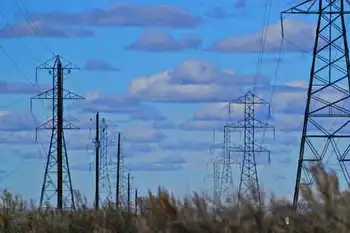Utility wants to deploy largest grid battery ever
By Reuters
Electrical Testing & Commissioning of Power Systems
Our customized live online or in‑person group training can be delivered to your staff at your location.

- Live Online
- 12 hours Instructor-led
- Group Training Available
The utility, a unit of Edison International, wants $65 million in grants from the U.S. Department of Energy for the pilot storage project and for another project involving integration of home energy management systems into the electric grid.
The utility wants $25 million for the battery project, which would be the largest ever for power grid applications, Paul De Martini, vice president of advanced technologies, said in an interview.
U.S. utilities are racing to increase their production of electricity from renewable energy sources to meet stricter state environmental rules and to gear up for any U.S. move to regulate greenhouse gas emissions from fossil fuels.
But wind and solar are intermittent energy sources, and storing the power — at an economically viable rate — is seen as crucial to making 'alternative' energy truly mainstream.
Southern California Edison is seeking the money from a $615 million fund that the DOE has set up for "smart grid"-related pilot projects. Smart grid technology measures and modifies power usage in homes and businesses, improving grid reliability.
The company wants privately held A123 Systems to assemble a utility-scale battery that would be made up of smaller batteries in an 8,000-square-foot building at an existing substation in the Tehachapi region in California.
The project is important to the California utility as it expects to have about 4,500 megawatts of wind power in the Tehachapi region by around 2015 and needs to find a way to store the power, De Martini said.
"We do recognize that there is a need for energy storage to help with mitigating some of the intermittency of wind," he said.
Southern California Edison is one of the leaders in delivering renewable energy to customers. It transmitted 65 percent of all solar energy produced in the United States last year.
A123 Systems, which makes lithium-ion battery packs for use in plug-in hybrid vehicles, was one of the big winners of the competition for $1.5 billion in federal stimulus funds for companies that make advanced automotive batteries.
The Watertown, Massachusetts-based company, which counts General Electric among its shareholders, received $249 million to build a battery factory in the United States.
The approval of Southern California Edison's application would be a big boost for A123 Systems' push into energy storage batteries for the grid.
The result of the applications is expected in November, De Martini said.
For the second pilot project on smart grid integration, Southern California Edison is seeking $40 million from the DOE and will be working with GE, SunPower Corp and Boeing Co, he said.
Utility companies around the world are laying the groundwork to upgrade their networks with smart grid technology.
Separately, another California utility, Pacific Gas and Electric Co, is seeking $25 million from the DOE's smart grid fund for a compressed air energy storage project, which aims to pump compressed air into an underground reservoir, using mainly wind energy produced during non-peak hours. The air would be released to generate electricity during periods of peak demand.











